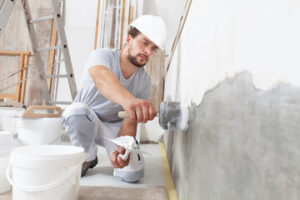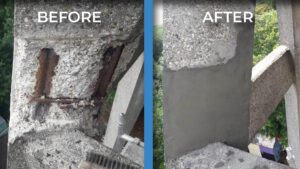Masonry is an important part of the structure of a building. Whether it’s a facade, chimney, porch, or walkway, masonry needs regular maintenance and repairs. Understanding the difference between repair and restoration can help you determine when to call a professional Masonry Repair Charleston SC. Ultimately, your goal is to get the best results for your building while staying within budget.
 Cracks can be a very serious problem in masonry repair. They are often a sign that the foundation of a home is sinking, so they should be fixed by professionals who specialize in both masonry and settling foundations. Bricks, mortar, and other masonry components can crack for several reasons. The most common are drying shrinkage, temperature fluctuations, and carbonation.
Cracks can be a very serious problem in masonry repair. They are often a sign that the foundation of a home is sinking, so they should be fixed by professionals who specialize in both masonry and settling foundations. Bricks, mortar, and other masonry components can crack for several reasons. The most common are drying shrinkage, temperature fluctuations, and carbonation.
Drying shrinkage causes concrete masonry products to expand and contract with changing moisture content, which is caused by the cementitious-coated aggregate matrix in the masonry walls expanding when it absorbs water and contracting when it releases water. Temperature fluctuations can also cause concrete masonry wall panels to shrink and expand due to the freeze and thaw cycles. This causes the masonry to crack as the water trapped in the wall freezes and then thaws.
This can result in severe cracking in the masonry, especially in older houses where clayey soils subjected to shrinkage movement are often used. When cracking occurs, reinforcement must be used to offset the volumetric changes in the masonry. Loose mortar in brick walls and chimneys lets moisture through, damaging interior walls. It also accelerates the deterioration of sound mortar.
Fortunately, masonry repair is an inexpensive and simple project for homeowners. The materials are economical and require only a few basic tools that are available at masonry suppliers or home centers. Start by measuring the width of your masonry joints. That’s how deep you need to clear them to reach solid mortar. Then add a strip of painter’s tape to the straight edge at that depth.
Then, with a rotary hammer drill (available for rent at most hardware stores), clear the horizontal joints first and then the vertical ones. Work from outside corners inward, so the bricks don’t take extra pressure that could knock them out of place (Photo 3).
Once you’ve cleared out all the joints, pack in new mortar into the prepared ones. Holding a hawk or brick trowel just under the joint, push 1/4-inch layers into it.
Despite the strength of brick and mortar, cracks do occur in masonry structures. This is due to a variety of factors such as house settling, weather changes and damage.
In the long run, cracked bricks can cause serious issues with your home and foundation, so if you notice any cracks in your masonry structure, be sure to get them repaired. In the meantime, though, some small cosmetic fixes can help prevent your masonry from becoming damaged further and looking worse in the future.
For smaller cracks in the brick surface, use a tube of clear silicone sealant. It can be applied to the top of the crack and will blend with the wall once it dries.
For larger cracks in the brick face, it’s a good idea to use a brick patch. This method is best for bricks that are high up on a home or wall that most people cannot inspect.
When your chimney’s masonry has deteriorated significantly, you need a professional to inspect the problem and fix it. Repairing a damaged chimney isn’t cheap, but it’s much cheaper than replacing it entirely.
Masonry, which is made up of bricks and mortar, is a strong, durable material that can last for a long time. However, like anything else, masonry can break down over time.
This can happen due to weather damage or faulty construction. In either case, minor problems that don’t get fixed can eventually become major issues if left untreated.
Typical signs of masonry damage include cracks, crumbling mortar joints and stains that can be a sign of significant water damage. Small cracks in a mortar joint can be filled with brush-applied crack filler and a tuckpoint, but if there are more extensive cracks, you may need to have the entire mortar joint replaced.
Besides the obvious fire hazards, masonry cracks can cause serious structural damage to your chimney. They can also interfere with the proper venting of smoke and combustion materials.
 Cracks and uneven concrete are telltale signs of structural damage. A professional company can assess your situation to determine whether or not it’s time to go ahead with repairs or replace the entire structure. If the cracks and unevenness are not too extensive, you can often choose to level the concrete rather than replace it entirely. To save money, consider hiring a professional concrete repair company to assess the damage and determine whether it’s worth replacing. However, it’s important to remember that the cost of leveling concrete is usually much cheaper than the cost of replacing it entirely.
Cracks and uneven concrete are telltale signs of structural damage. A professional company can assess your situation to determine whether or not it’s time to go ahead with repairs or replace the entire structure. If the cracks and unevenness are not too extensive, you can often choose to level the concrete rather than replace it entirely. To save money, consider hiring a professional concrete repair company to assess the damage and determine whether it’s worth replacing. However, it’s important to remember that the cost of leveling concrete is usually much cheaper than the cost of replacing it entirely.